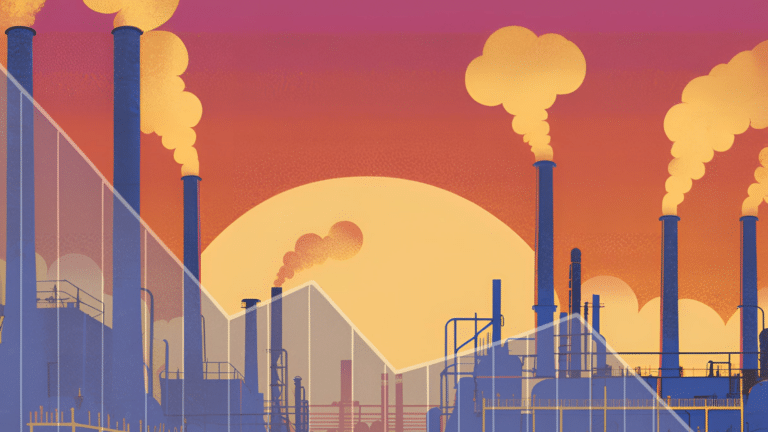Read the Report
The Nature of the Energy Industry Future Workforce Challenge
Building diverse, inclusive work environments has become a priority for businesses across the globe—bringing benefits that include higher productivity and improved performance, as well as increased creativity and broader perspectives that lead to better decision-making. While the energy industry has made progress toward diversification, more work is needed. Toward the goal of promoting diversity in the sector, the Women in Energy program of Columbia University’s Center on Global Energy Policy (CGEP) and Pioneer Natural Resources convened a workshop, Future Workforce in the Energy Sector, on November 8, 2018. The meeting convened executives of energy companies and thought leaders from industry and academia.
Participants agreed that the energy sector, under its current hiring and retention practices, was unable to capitalize on the full benefits of a diverse, future-focused workforce. The event devoted significant time to discussions of recruitment and retention of groups underrepresented in the industry (such as women, minorities, and millennials), while tapping expertise from energy companies and other industries that have been the most successful in recruiting and retaining talent.
The following document provides a brief background on women and millennials in the energy industry before summarizing the discussion and findings from the CGEP workshop. As the event was held under the Chatham House Rule, participants will not be identified.
Background
Women represent between 22 percent and 34 percent of the workforce in the energy industry, with percentages at the highest ranks even smaller.[1] In the oil and gas sector, representation tends to be lower. In the clean energy sector, however, it is generally higher, with women making up 32 percent of the wind and solar workforce. All sectors say they are having trouble recruiting women and minorities with science, technology, engineering, and mathematics backgrounds, despite a rising number of diverse graduates.
Almost a quarter of the US employees of the natural gas and electric utilities industry will be approaching retirement within five years, necessitating a huge influx of new personnel to the sector in the next few years.[2] To enhance recruitment and retention, companies have gotten more creative. In the utility sector, firms have tried partnering with industry and labor unions to establish apprenticeship programs—targeting students in underserved communities and creating educational programs that reach out to students in middle schools. The recruitment processes of private companies have also been tailored to ensure diversity is built into the pipeline of candidates being interviewed on college campuses.
There are many benefits to diversifying a workforce. It is harder to come to a consensus in small work groups that are not homogenous, but they are more apt to reach correct answers. This notion was the conclusion of a decade of research on small work teams by Columbia University’s Graduate School of Business professor Katherine W. Phillips.[3] Phillips’s research shows homogenous groups can come to a consensus faster and they feel more confident in their conclusions than diverse teams (although they are not necessarily reaching the correct conclusions). In fact, they have a higher chance of getting the wrong answer than diverse groups, which take longer to deliberate and feel “less confident” of their outcomes. Phillips noted, “Diversity gains do not only result from bringing different perspectives to the table.” Simply adding social diversity to a group forces people to think differences of opinion might exist among themselves, and that belief prompts changes in behavior and pushes people to work harder to come to a consensus and be more open-minded to new ideas; this leads to better outcomes. Other important factors for garnering the benefits of diversity include shared goals, team building (with minimized status differences), and shared impact; these are features common to the tech sector.
Phillips’s research is confirmed by other studies and extends to findings related to the benefits of having diversity in the C-suite and boardroom. A large statistical study published in the Academy of Management Journal in 2017 found that companies with women in these senior ranks contribute to the long-run performance by lessening the chances of risky strategies being adopted.[4]
Workshop Summary
Creating a More Diverse Workplace
Harvard Business Review surveys of strategic approaches to diversity indicate that command and control programs—such as grievance systems, performance evaluations, and hiring test assessments—are not succeeding. In some cases, these programs are even creating unintended backlashes from members of groups that tend to be advantaged in the society, who fear discrimination and unfair treatment within organizations with prodiversity messages.[5] Instead, executives of energy companies that attended the CGEP workshop suggested—in line with academic findings—that other formal programs (such as resource groups, task forces, childcare subsidy, or on-site programs) and returnship programs for employees who choose to stop working for a period of time (e.g., to take care of a sick relative or after the birth or adoption of a child) have proven more effective in retaining and fostering a sustainably diverse workforce.
Participants of the workshop noted, “There are also programs and internal systems that can be set up to promote contact between groups, which leads to acceptance of a more diverse workplace.” These programs include cross-skilling (training workers in multiple skills set to work on different projects within an organization), self-managed teams (small groups of employees who, together, plan and execute day-to-day activities or projects with minimal supervision), and third-party coaching and mentoring programs. There are other important measures corporate leadership can take: senior management can assemble task forces, and CEOs can promote social accountability. Such actions have been shown to be statistically more effective than other steps, such as mandatory diversity training.[6] In the energy industry, success has been recorded when CEOs invite department heads and members of unrepresented groups to discuss approaches for improving recruitment, promotion, and overall diversity performance across the company.
Millennial Workers
The matter of recruiting and retaining young workers has become an increasing challenge for the energy industry. In an internal study on the subject, one workshop participant found that a cultural shift was needed to improve its workforce turnover rate for millennial workers. “Workplace flexibility, transparency, and an orientation that incorporates well-being are principal practices that are attractive to younger generation workers,” the participant noted. Because millennials are more engaged with digital working methods, the company created specific innovation challenges to give younger workers an opportunity for higher performances and greater productivity. Their study suggests younger generations are expecting more from their relationship with their organization than past generations and they seek a workplace that is authentic and inclusive.
One program that is garnering more interest among corporations is “reverse mentoring,” where knowledge sharing flows in both directions. Younger employees share technology, organizational issues, career planning, and other capabilities and preferences. In return, they gain generational perspectives on industry subject matter and become aware of past experiences. Reverse mentoring is an innovative and cost-effective means to cross-train employees for shared support and mutual training in the digital age. Reverse mentoring can also promote diversity by demonstrating the knowledge and skills of younger workers, thereby mitigating perceptual biases of older leaders and increasing the promotability of individuals of diverse backgrounds.
Companies observed younger workers prefer more regular evaluation and feedback processes than traditional annual reviews. The younger workers also resist “need-to-know” processes and the lack of transparent communication that restricts information to a small pool of decision makers. Companies that pool large numbers of younger workers are thus moving toward greater transparency and inclusion in information and decision-making processes. In particular, pay transparency and equality have become increasingly important as has incorporating trade-offs between overworking and compensation. Millennials do not value money less than other generations. They are, however, cognizant of the value of different elements to the work environment, such as remote working and volunteering and their relationships to compensation levels. Participants said they preferred settings with team cohesion, value international assignments, and access to stretch goals (additional and more challenging goals to be obtained if a project’s objectives are met).
Energy companies are discovering that with the digitalization of the energy sector, they are competing with companies like Google and Facebook for potential employees. Attendees noted that to attract young workers, who value oil and gas companies’ commitments to social responsibility and sustainability, companies need to promote the positive impact of their work.
Barriers Specific to Energy
According to workshop participants, the energy industry has experienced several downturns in recent years, and the cyclicality has had a disproportionate impact on women. During downturns, many companies scale back on diversity programs. Downsizing can affect the female workforce due to the lack of adequate structures and sponsorship from middle management. Some women executives from energy companies said they also found that biases impacted women in periods of downsizing due to the perception that women “have a choice” about whether to stay in the workforce or not. “Whether this ever was or currently is a real choice for some women,” as one executive noted, “from a cultural perspective, the perceived ‘choice’ to work has not always existed for many women.” Separately, it was also noted that in affinity networks inside companies, a vertical, with a higher percentage of women, led by a rising female executive can be adversely affected if the woman does not succeed to the C-suite.
Workshop participants stressed that energy-related technical job postings, especially for higher-level positions, do not often generate a single applicant that would qualify as diverse. One executive noted that most senior women in her organization were in finance or human resources departments, but the way the organization worked, candidates for promotion needed to be in a technical or engineering field to get promoted. This discrepancy in the pipeline for promotions becomes more apparent at the senior level—as there is a larger gender gap at the senior level compared to the entry level, where women comprise close to 50 percent of the employees at that level in her company. Participants said companies needed to have institutionalized programs to overcome the limitations of the internal and external candidate pipeline—including leadership development, cross-training of high-potential workers, and screening processes that eliminate unconscious bias (one company noted it used résumé screening software). To promote diversity and garner its benefits, workshop participants stressed that companies needed to have formal systems and processes that minimize bias and engage employees to embrace diversity. These systems need to be transparent, be consistent, and offer clear measures for accountability. As one executive noted, “What gets measured, gets done.” The executive also said more needed to be done to force the upper management at certain oil and gas firms to push for greater accountability in hiring practices.
Visibility of women in management is also enabling, not only within the companies but also in public industry events. One start-up firm led by women suggested that the visibility of diverse senior management gave them an advantage in recruiting young women. Another firm said funding and supporting women’s organizations and networks gave them greater visibility on available talent. Shareholder investor groups are also pushing management to improve practices on diversity and inclusion, especially on the board and executive levels. More diverse board members notice when management presentations are homogenous, and this also forces change.
Conclusion
The energy industry needs to adopt diversity and inclusion initiatives that are tracked and measured to ensure it is recruiting the best talent available as it replaces the aging workforce. The energy challenges of tomorrow require a diversity of perspectives to tackle global and local issues. Diverse workforces also promote the kind of creative solutions needed to solve 21st-century energy challenges. Baby boomers and Generation Xs alike are already benefiting from more flexibility, pay equity, and greater transparency—steps companies have taken to meet the needs of today’s younger generation of workers.
Throughout the workshop, participants stressed the need for female role models and increased visibility of women in the energy sector, both inside companies and externally in more public settings where the energy industry is present. This visibility is important for the recruitment of more women and people of color into the industry. Workshop participants agreed with studies showing that as companies are seen promoting women and people of color into senior roles, retention of a more diverse workforce of high-potential employees improves. Company boards and investor stakeholders can play a role in helping the energy sector become more inclusive. CGEP’s Women in Energy program will also look to convene future workshops on these topics.
[4] Seung-Hwan Jeong and David A. Harrison, “Glass Breaking, Strategy Making, and Value Creating: Meta-Analytic Outcomes of Women as CEOs and TMT Members,” Academy of Management Journal 60, no. 4. (2017): 1219–52.
[5] Tessa L. Dover, Brenda Major, and Cheryl R. Kaiser, “Members of High-Status Groups Are Threatened by Pro-diversity Organizational Messages,” Journal of Experimental Social Psychology 62 (January 2016): 58–67.
[6] Frank Dobbin and Alexandra Kalev, “Why Diversity Programs Fail,” Harvard Business Review (July–August 2016).





